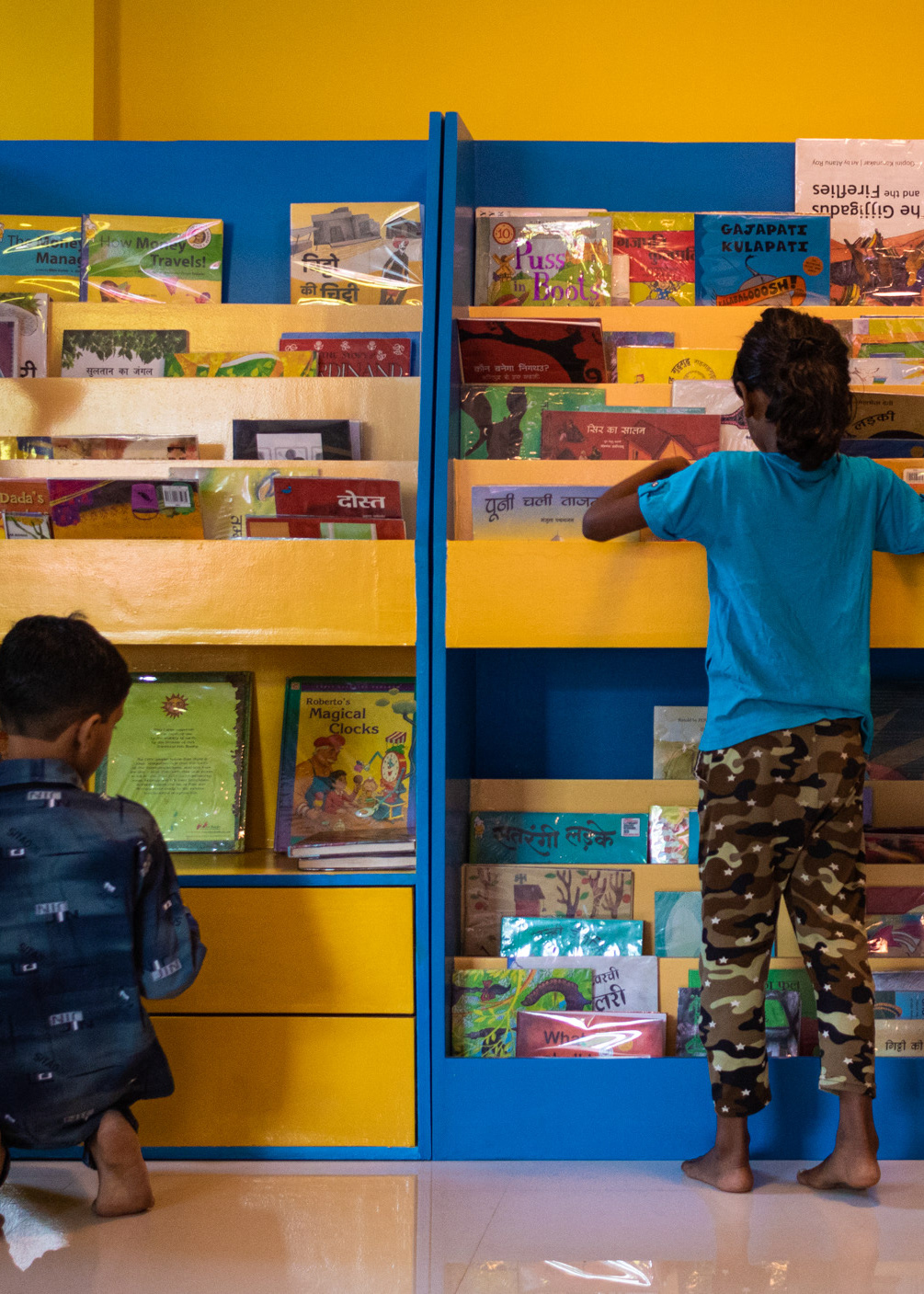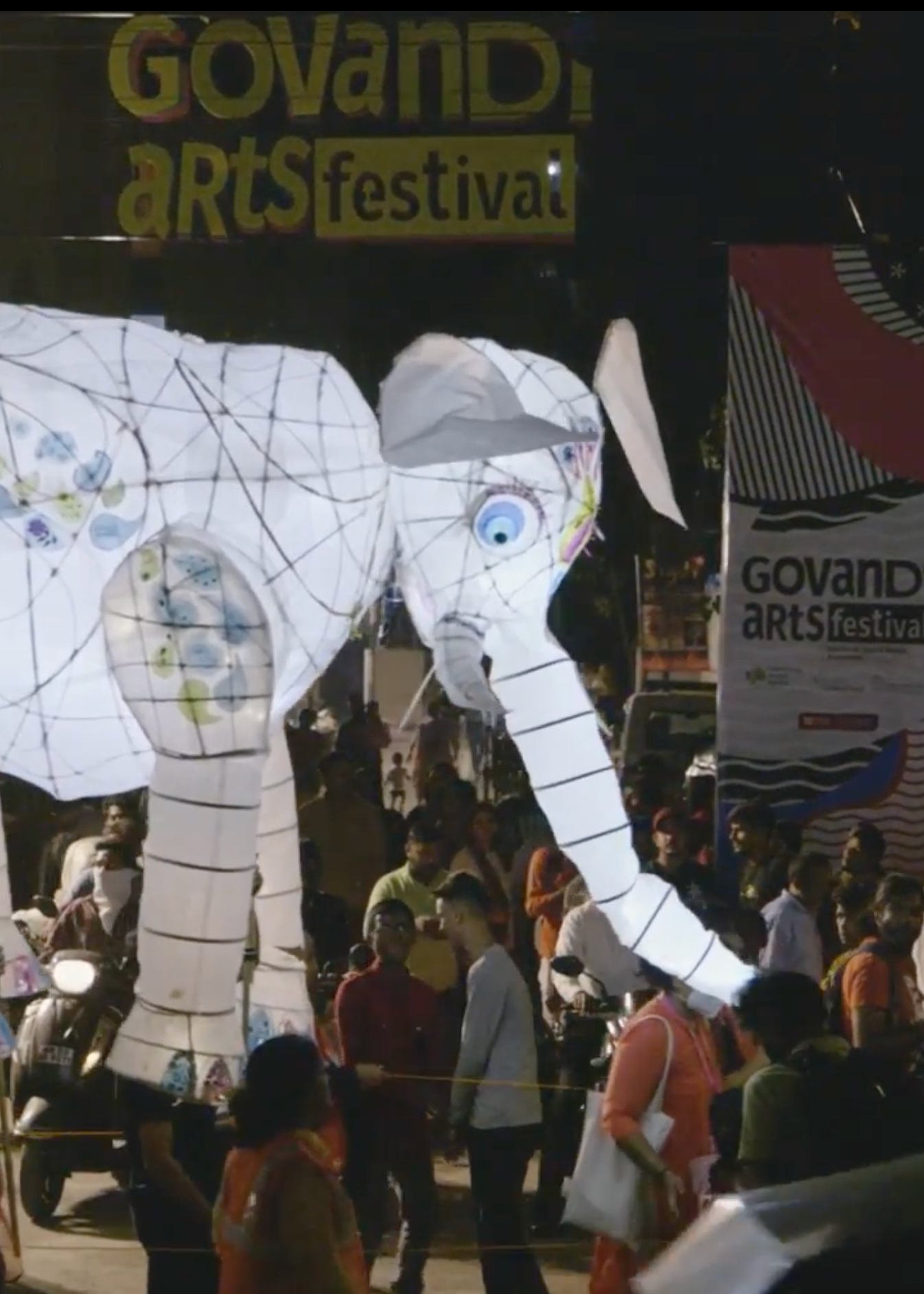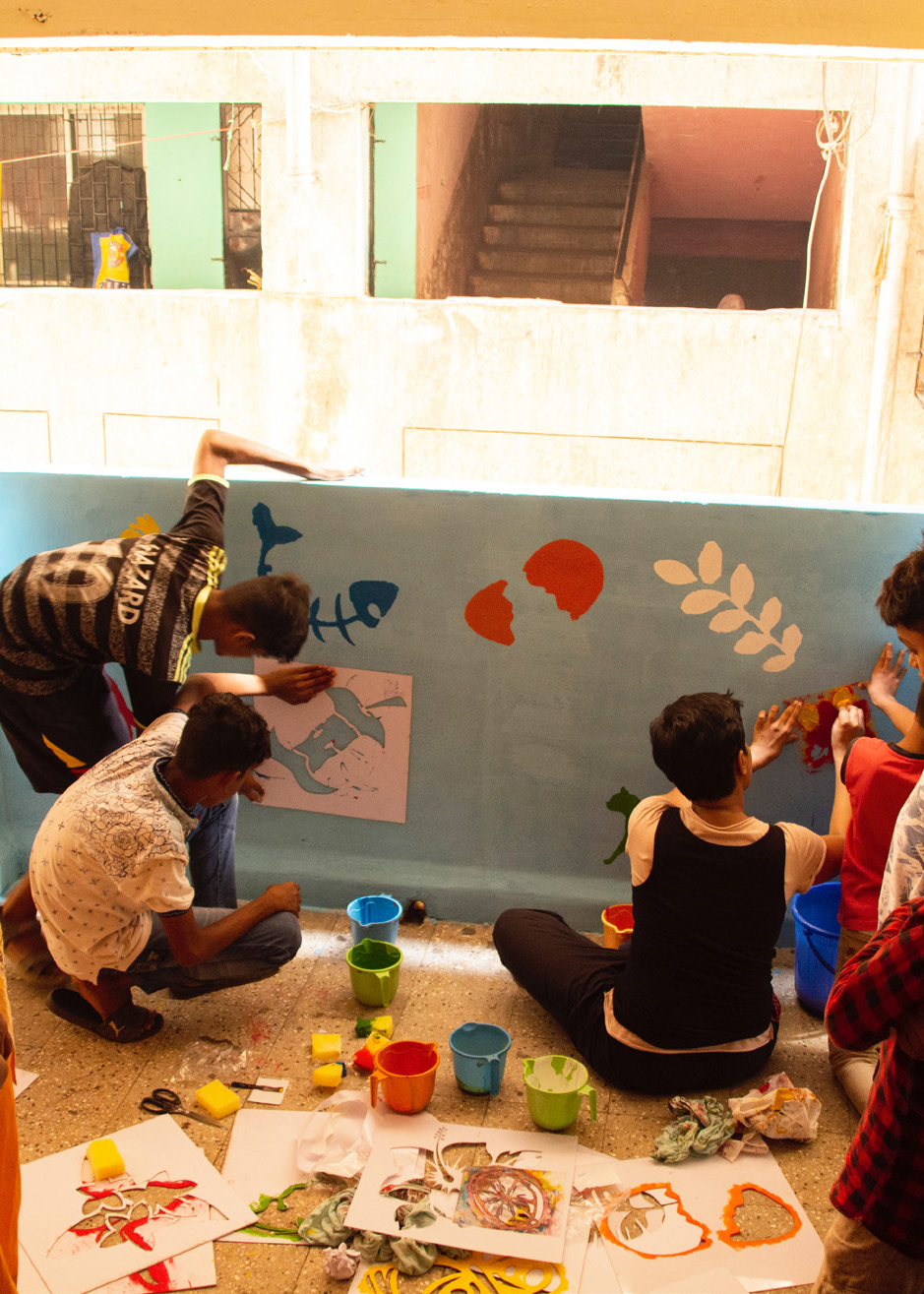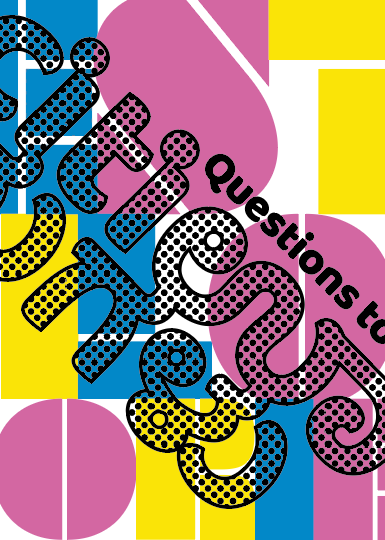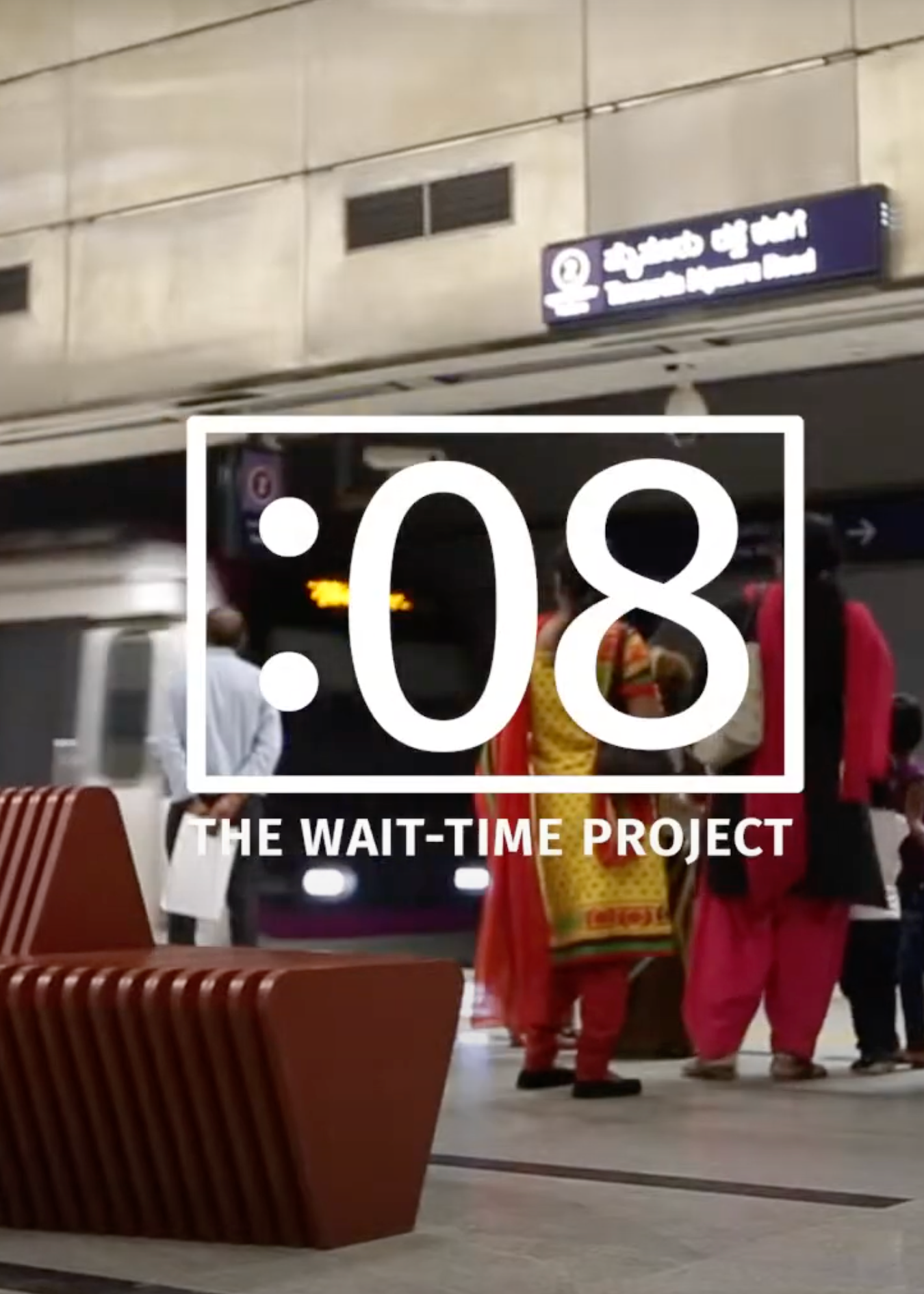The protagonist of an urban space is its public space, the place where the collective reality of the city is produced. It serves as urban material that provides a response to various social, aesthetic and collective needs. The city then becomes a model of form and function where public spaces act as physical aesthetic artifacts reflecting and representing the city’s identity.
This intervention is part of a series of placemaking interventions done in ‘ Cubbon Park’, a public park at the epicentre of Bangalore, India. This project is looking at the relationship between the city and its public, and inquiring:
How public is public space?
What is the aesthetic of a public space?
How does it alter people’s behaviour?
How can design facilitate public behaviour?
What is the aesthetic of a public space?
How does it alter people’s behaviour?
How can design facilitate public behaviour?
It entailed creating iterative situations/ scenarios by installing familiar objects in unfamiliar places in the park without any prompt or direction of what to do with it. The choice to interact and interpret these interventions was left on the people in the park. My role as an artist was to present these situations and observe. The outcome of these interventions was not predetermined but the process triggered people to become active participants.
*The quality of documentation for these experiments is not the best. At the time I was not equipped with good quality documentation tools and I am mindful of being non-intrusive in my ways of observing and recording. All images presented here are taken with consent.
Library of Mats
A hundred acres of land, Cubbon Park lies in the heart of the city Bengaluru. Where people from various corners of the city come for rejuvenation, picnics, walks and play. People bring their mats , snacks, games and spend an average of two hours in the park.
This intervention involved installing 70 mats in the park, 4 feet by 6 feet each before lunch time on a Sunday. The mats were regular looking and had no given clue about what one could do with it or what is the point of it. Using trees as shelves, each mat was hung or stacked on trees. This not only made the park look unusual but intrigued people to think beyond it and question why and what could be the purpose?

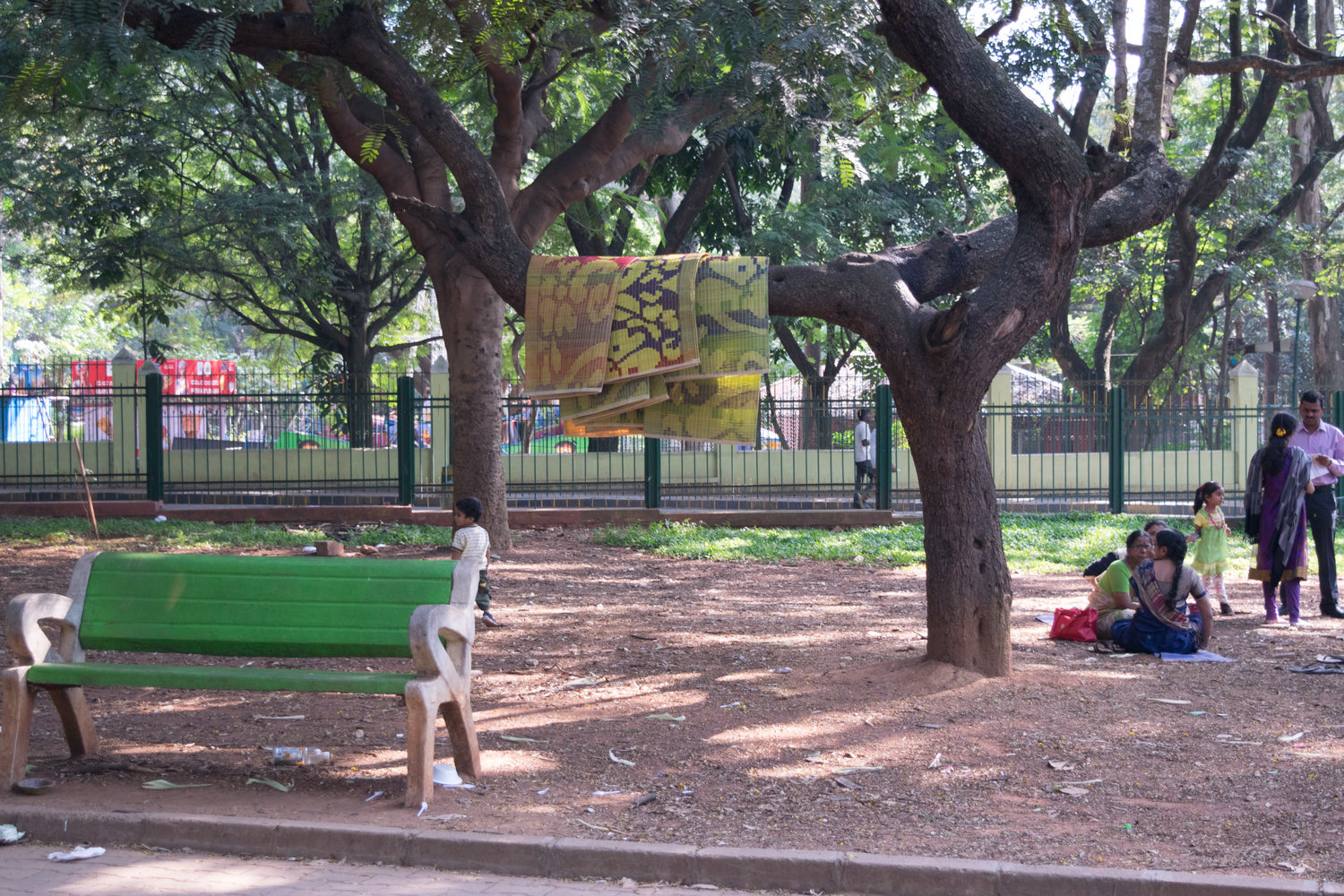
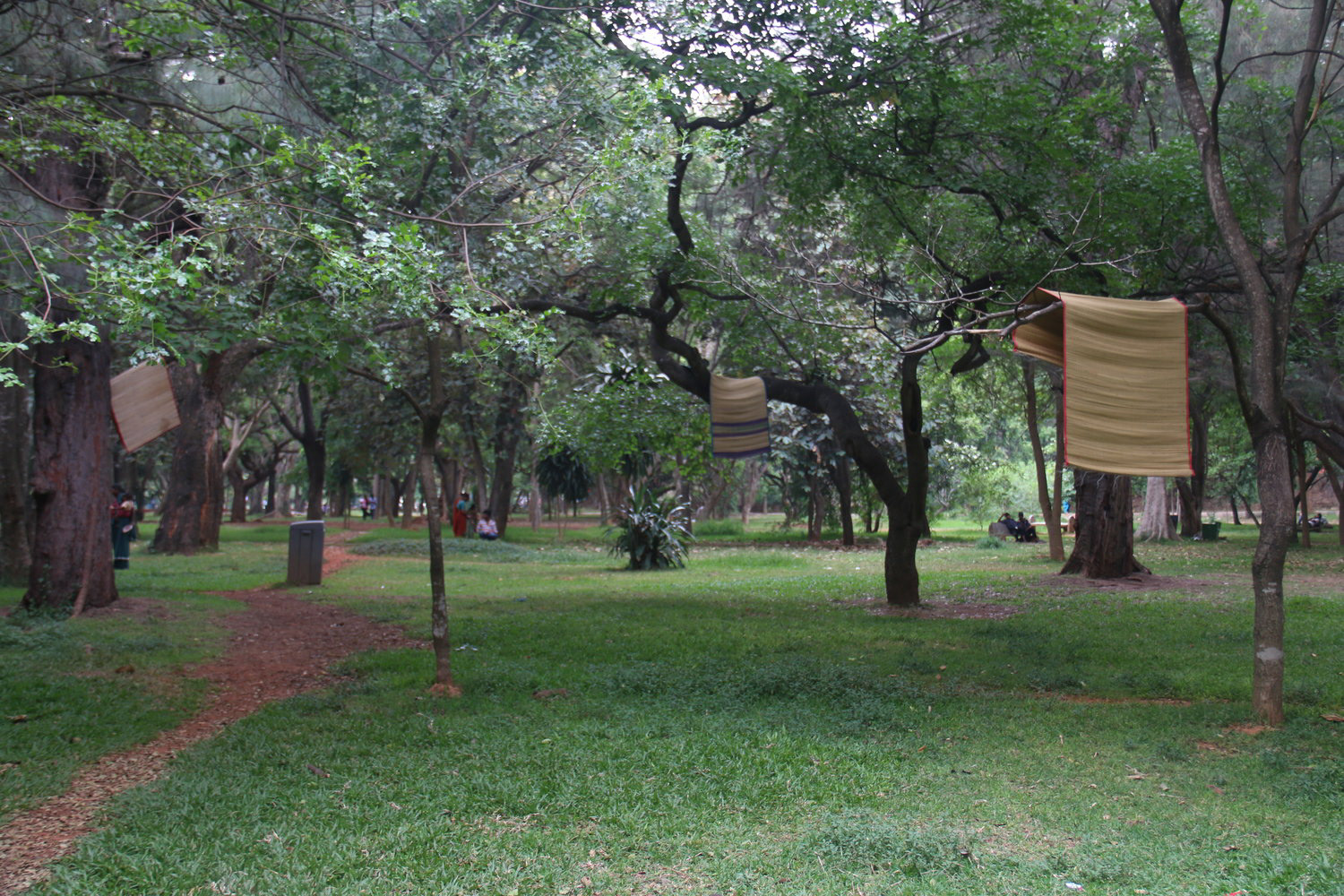
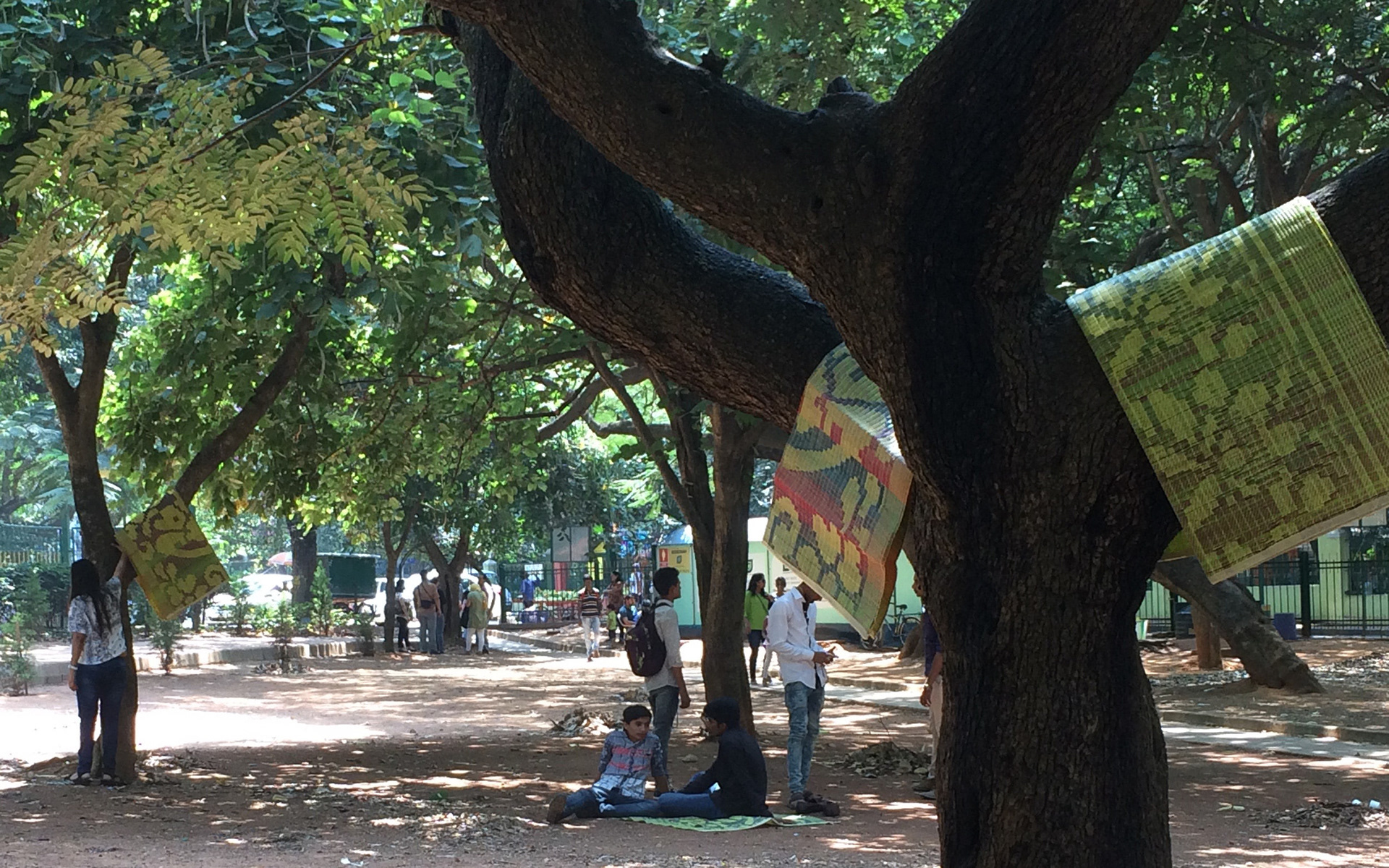
Eventually, without any prompt or initiation, people started pulling the mat down and using it. More people started doing the same as they saw other people do it. After observing this interaction repeatedly, it came by surprise to see people putting it back on trees as well. A whole of 70 mats revolved around 120-150 people including families/ couples/ individuals that had come that day for their picnic. A large group of people used these mats as props to come up with games and activities. I intervened as a stranger and asked one of the many people using the mat, why he was putting the mat on the tree, to which he said that he got it from there, and nobody stopped him, so it may belong to the everyone who comes to the park. He offered that I could use it too but just remember to put it back.
The mats became points of encounter and interaction in the park, an object that revolved around different groups of people at different hours of the day. In a microsite, this intervention reflected that given the opportunity, people are willing to interact, play and share spaces and go beyond the rules of social conduct. It also opens up conversations around how current ways of designing public spaces need to be done in participation with the people to make spaces more inclusive, democratic, accessible and in short more ‘public’ in nature.
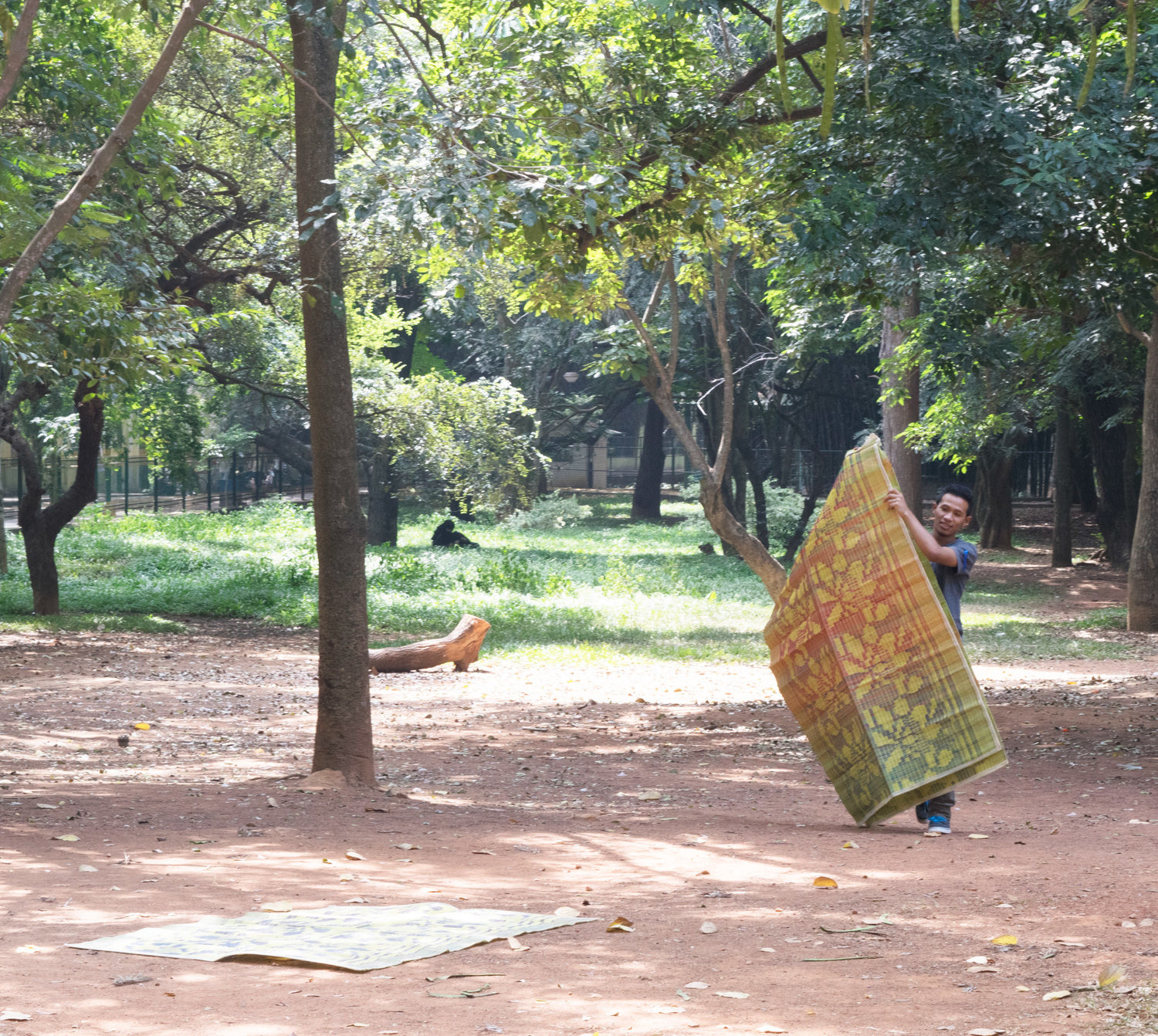

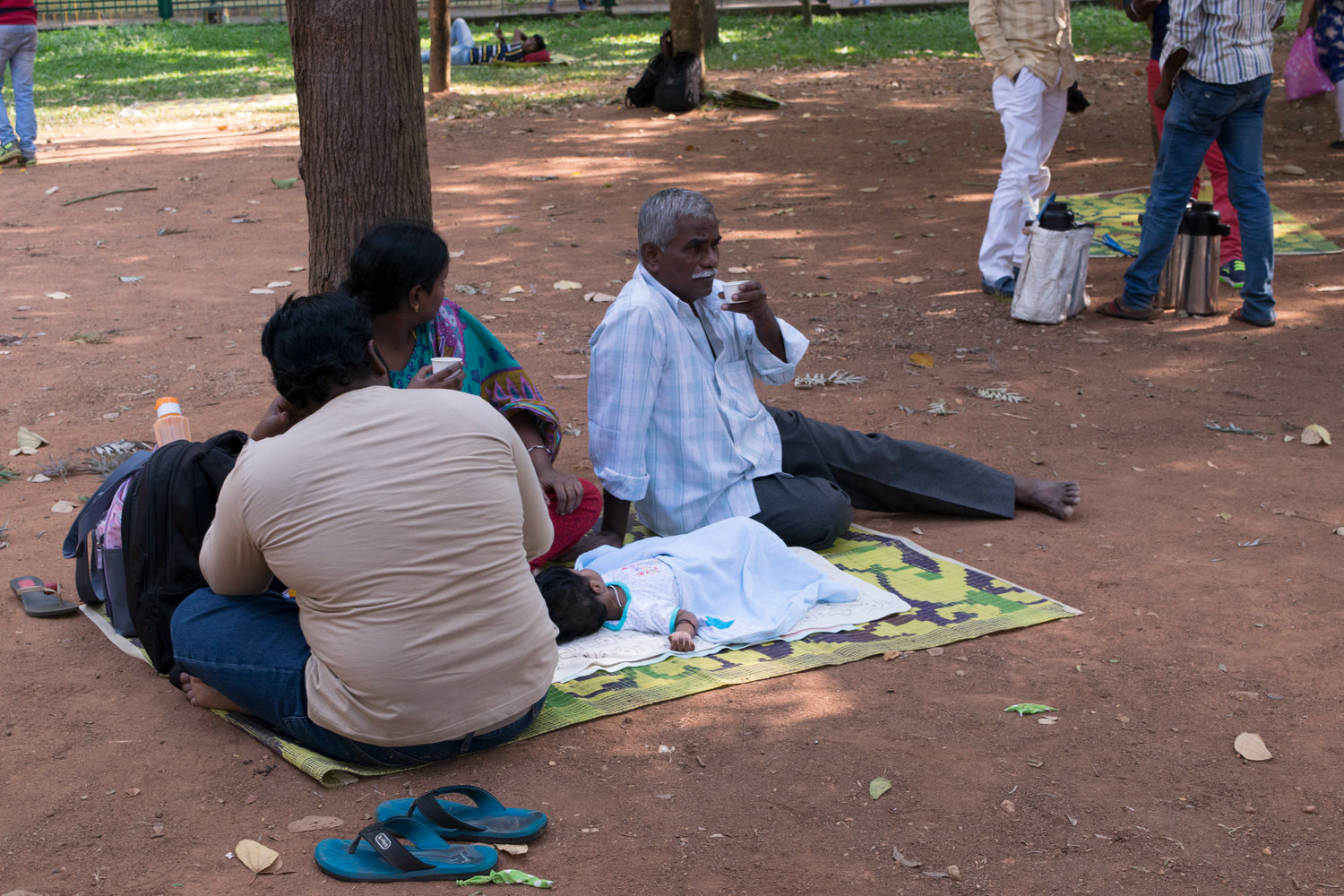

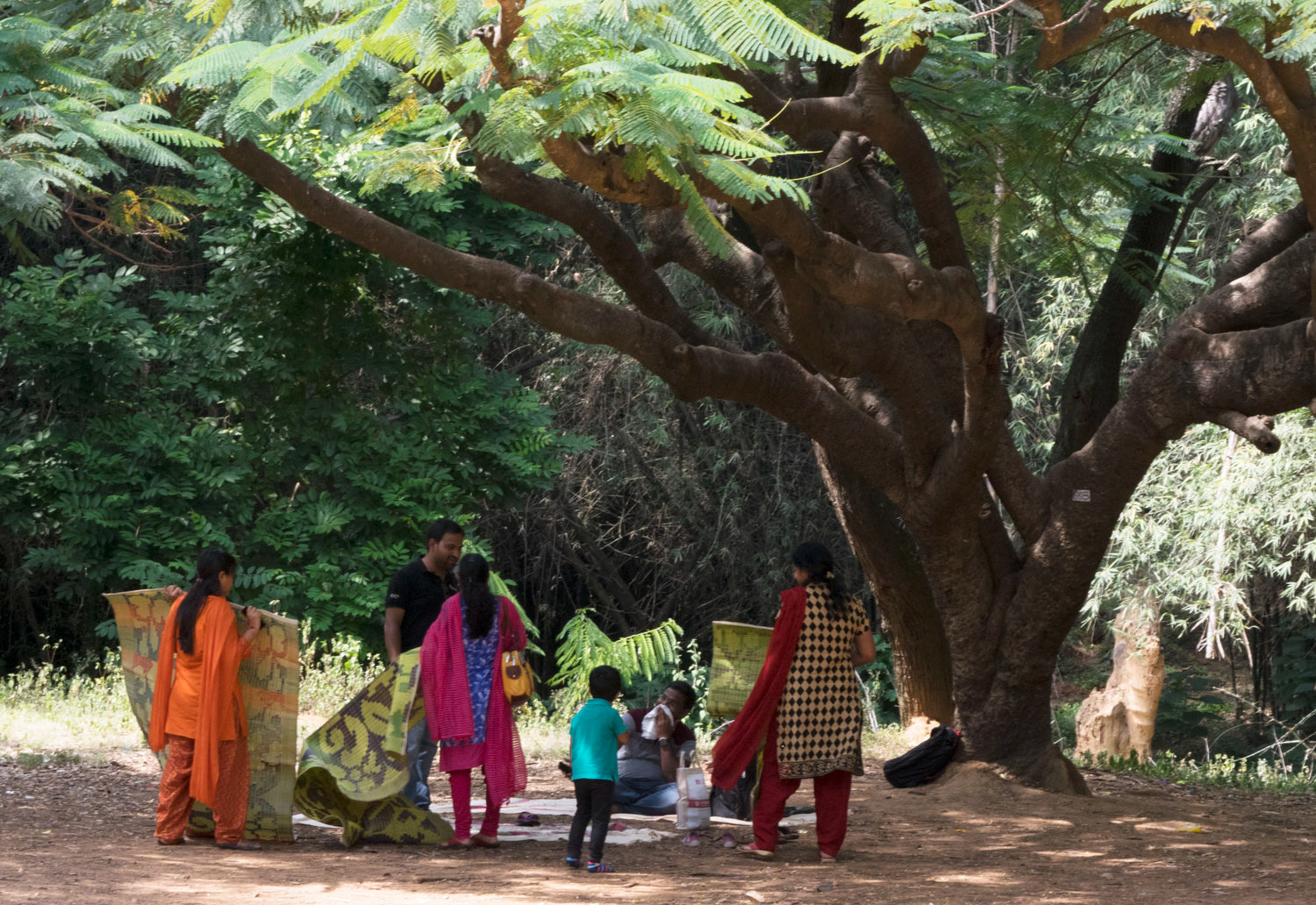
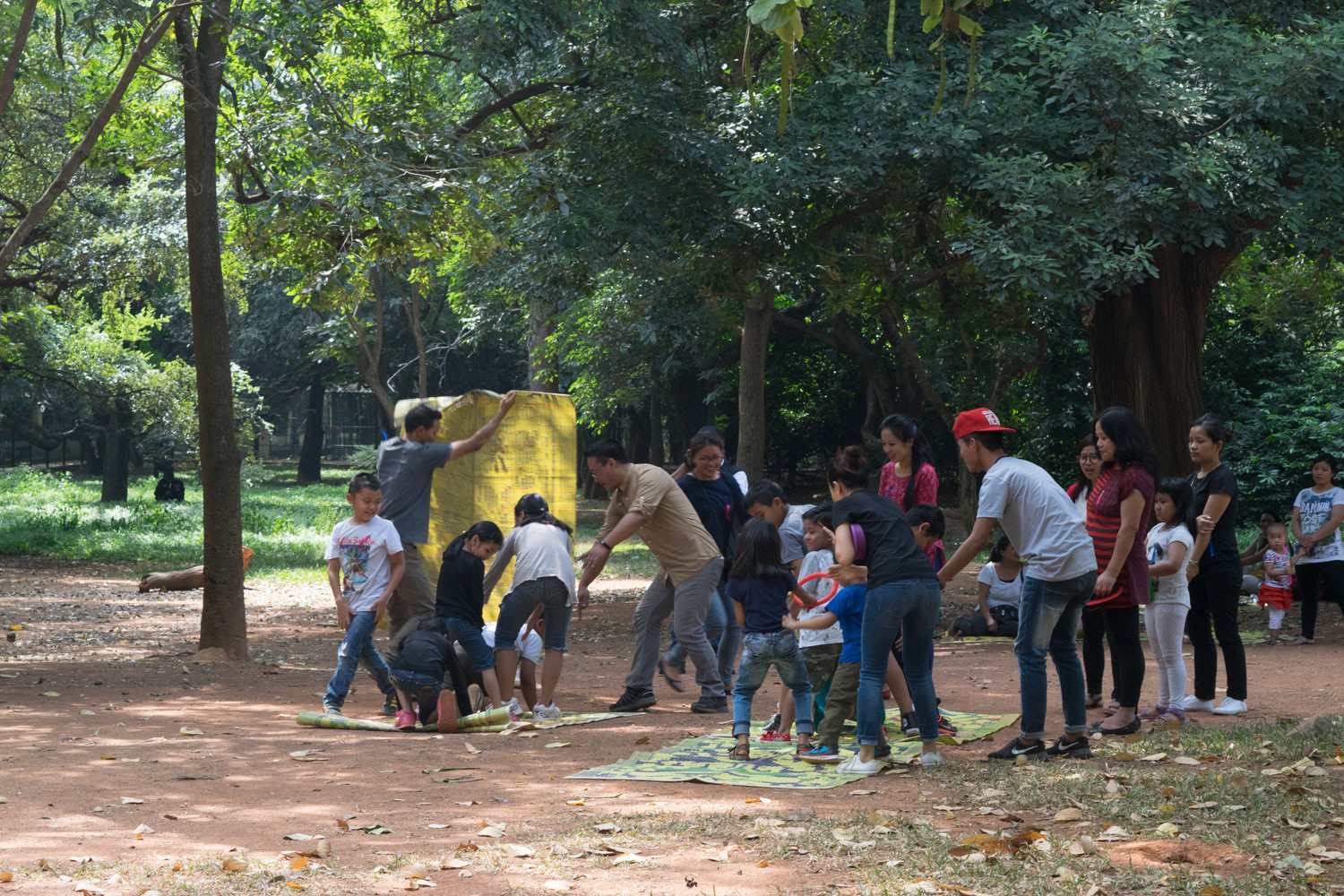

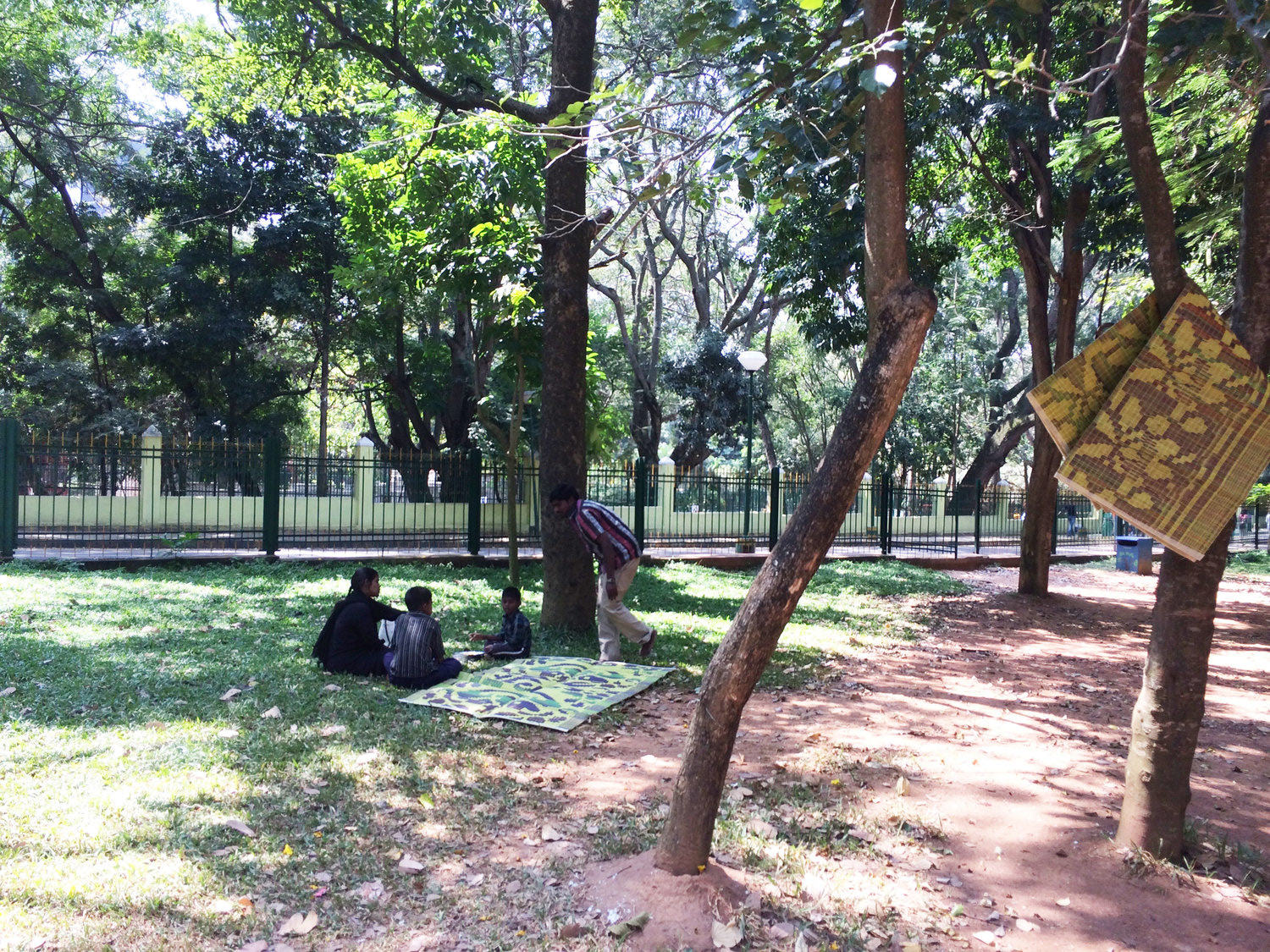
This intervention was followed by another intervention that I called The Giant Mat
Through this installation, I wanted to challenge the previous experiment and blur the boundaries between private and public. I wanted to present an opportunity for collective ownership and generate a sense of a shared space.
The Giant Mat
I installed a giant 24 feet by 16 feet mat (by stitching 30 4ftx6ft mat together) in Cubbon park and left it to the public to use. At first, it was used by a family of eight that placed themselves on one corner of the mat, leaving the rest for someone else to use. After sometime, another family sat diagonally opposite to them. Eventually, the two groups started initiating some dialogue. The kids of the two families started playing together and some shared food too. Similar movements happened through the afternoon. What was standing out was that only the people who could socially identify with each other felt comfortable sharing the mat. This also created a barrier between the rest who wanted to use it but did not feel comfortable. The mat made it evident how identity has a role to play in shared space.
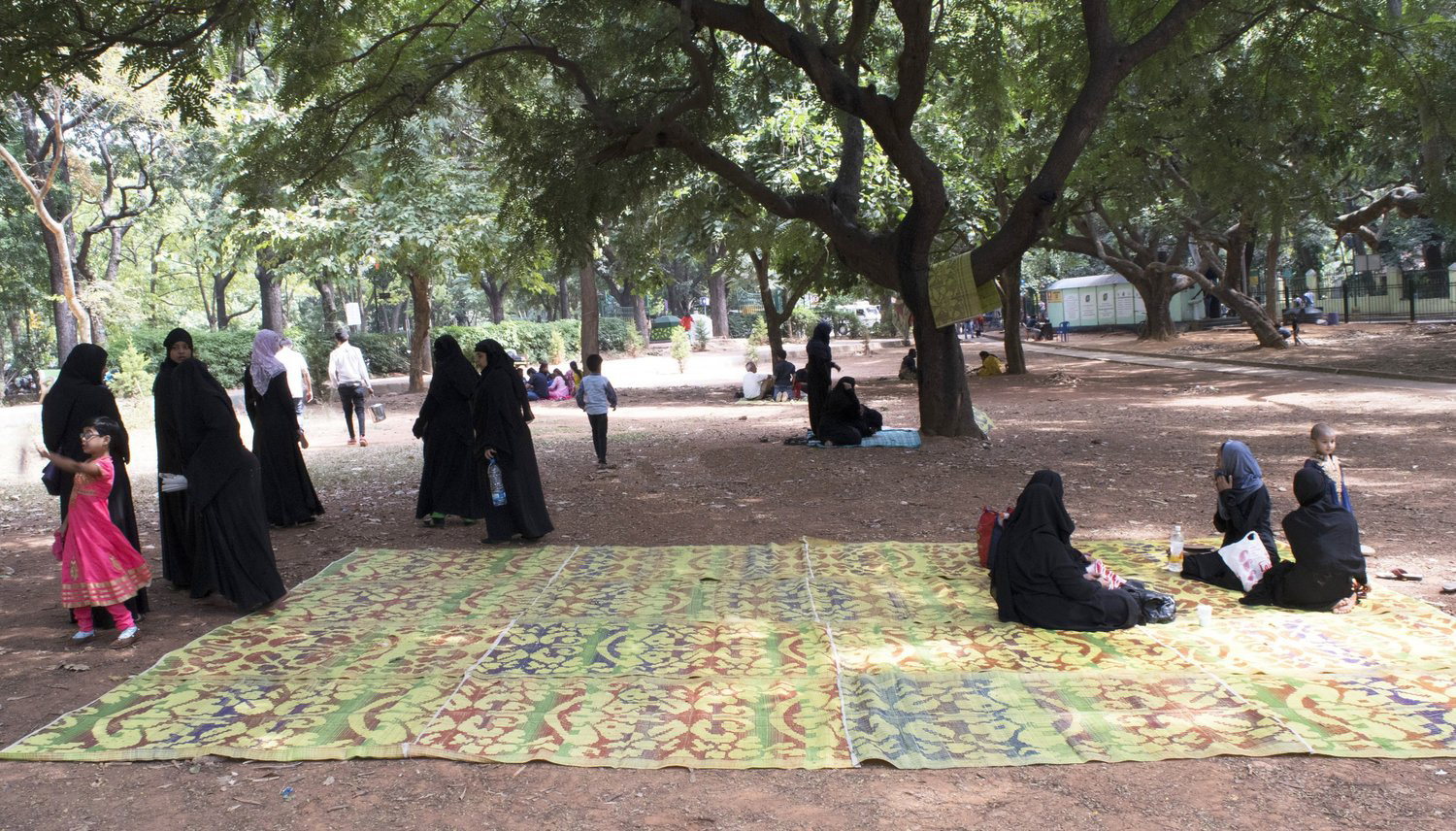
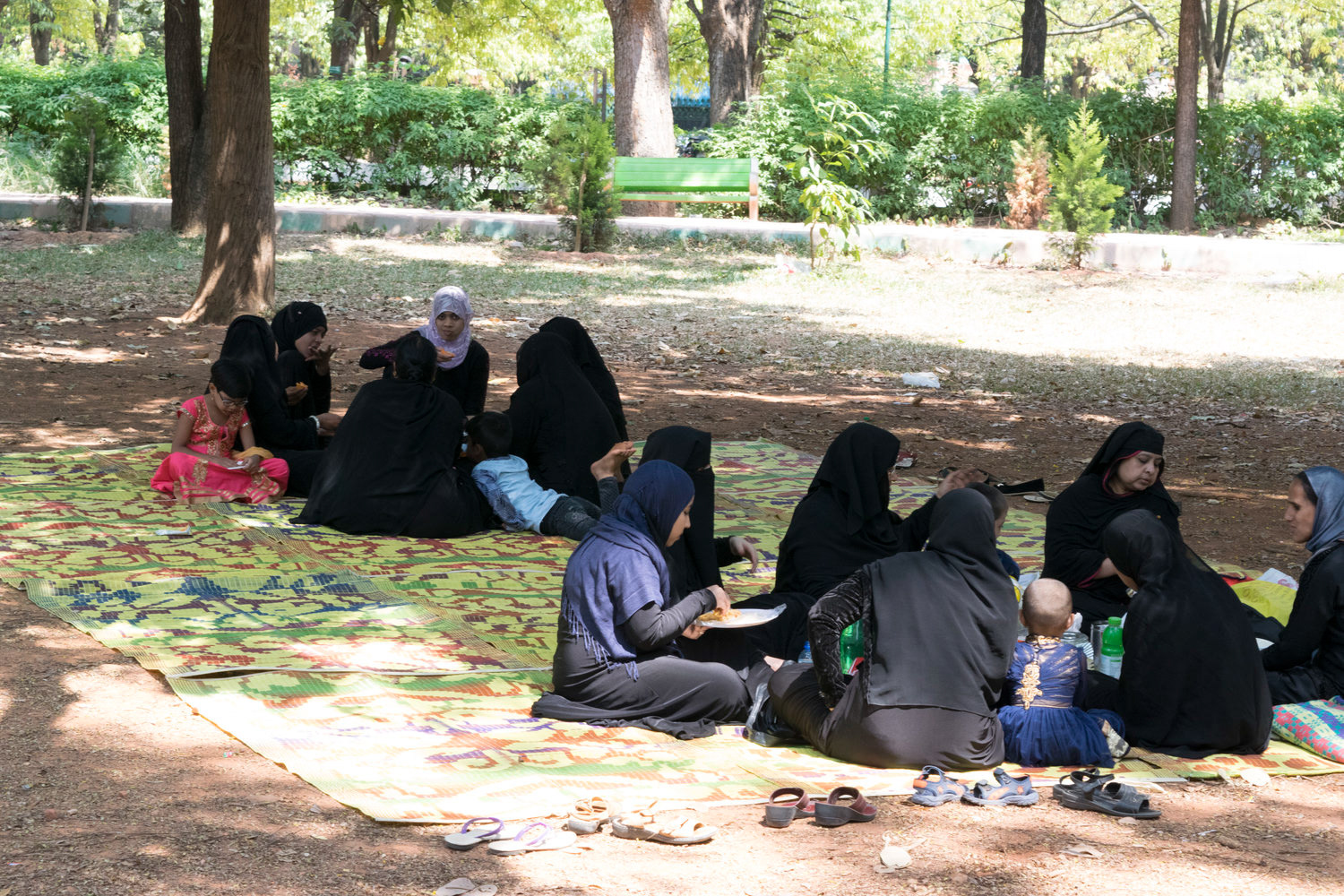
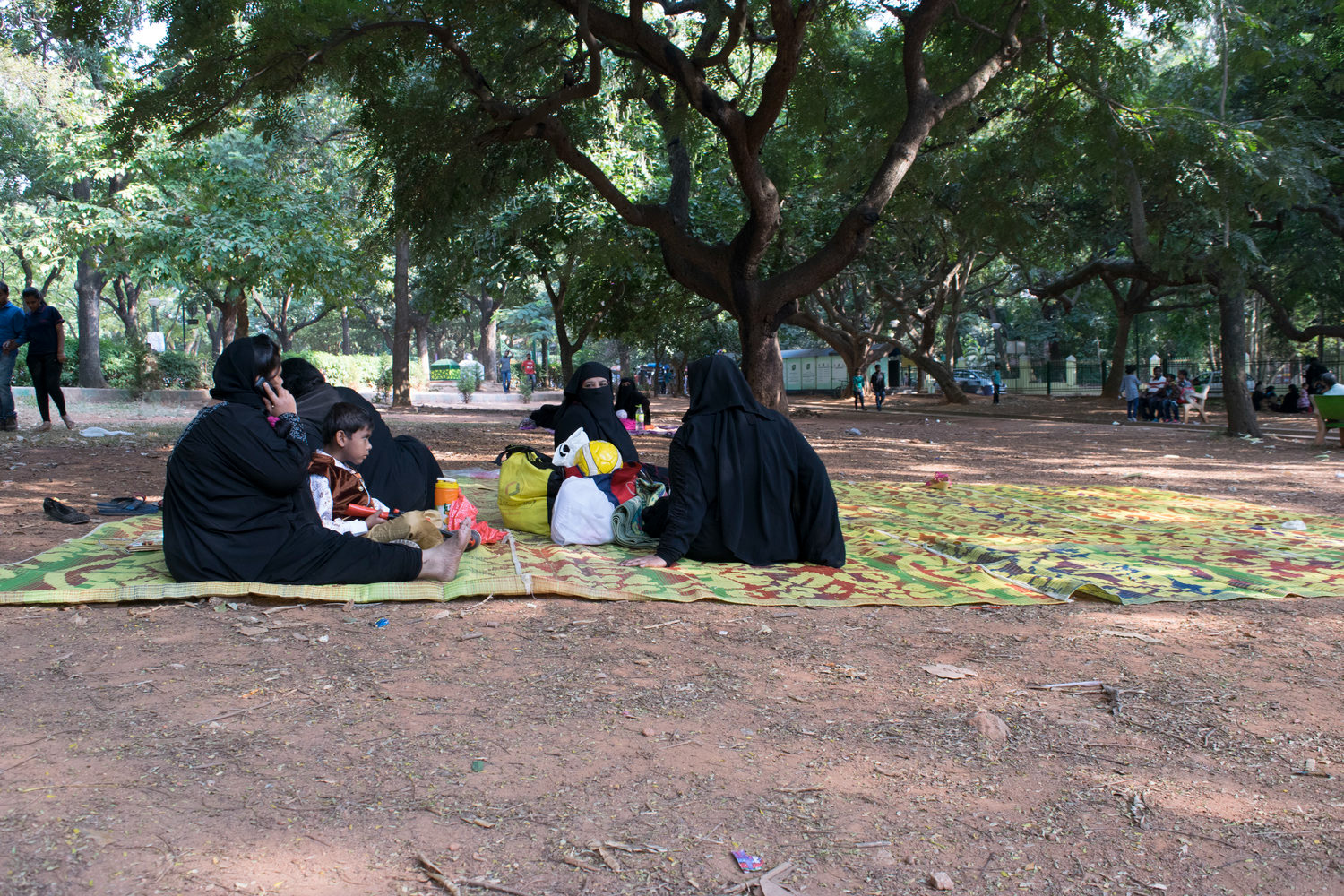

Contained lines
The above two interventions was a response to my first experiment called Contained lines.
This intervention attempted to understand what boundaries do to a place?
When we come to a public space, we carry our own private space into a public space. How does that determine our collective experience within that space
I located dense picnic spots, benches, shaded spaces under trees and made chalk powder lines on the grass. This was done early in the morning when not a lot of people were in the park and observed during lunch time when the park started to crowd. The choice of accessibility is given to the public.
Eventually as few families started locating their picnic spots, they were intrigued to see these lines spread out around their usual spots. And even though the chalked space looked no different from what was outside of it, the families hesitated to sit inside it. When I went and engaged with a few families as a fellow visitor in the park asking if they knew what this is, some said that maybe someone has reserved it, some said that they don't know and they are not comfortable sitting there, it does not belong to them.
In my observation the way people dodged the chalked spaces rendered how a hand drawn line was perceived as an illustration of control, held by the other that's not our own. Though it visually did not block the view of the park for anyone who was sitting but as a space it affected movement, comfort and more than anything ownership of a private space.
One family went and sat inside the spot and oriented themselves along the lines. When I went and asked them why they were sitting inside this, they said ”We feel like it's our own private space in such a big park, no one can disturb us.”
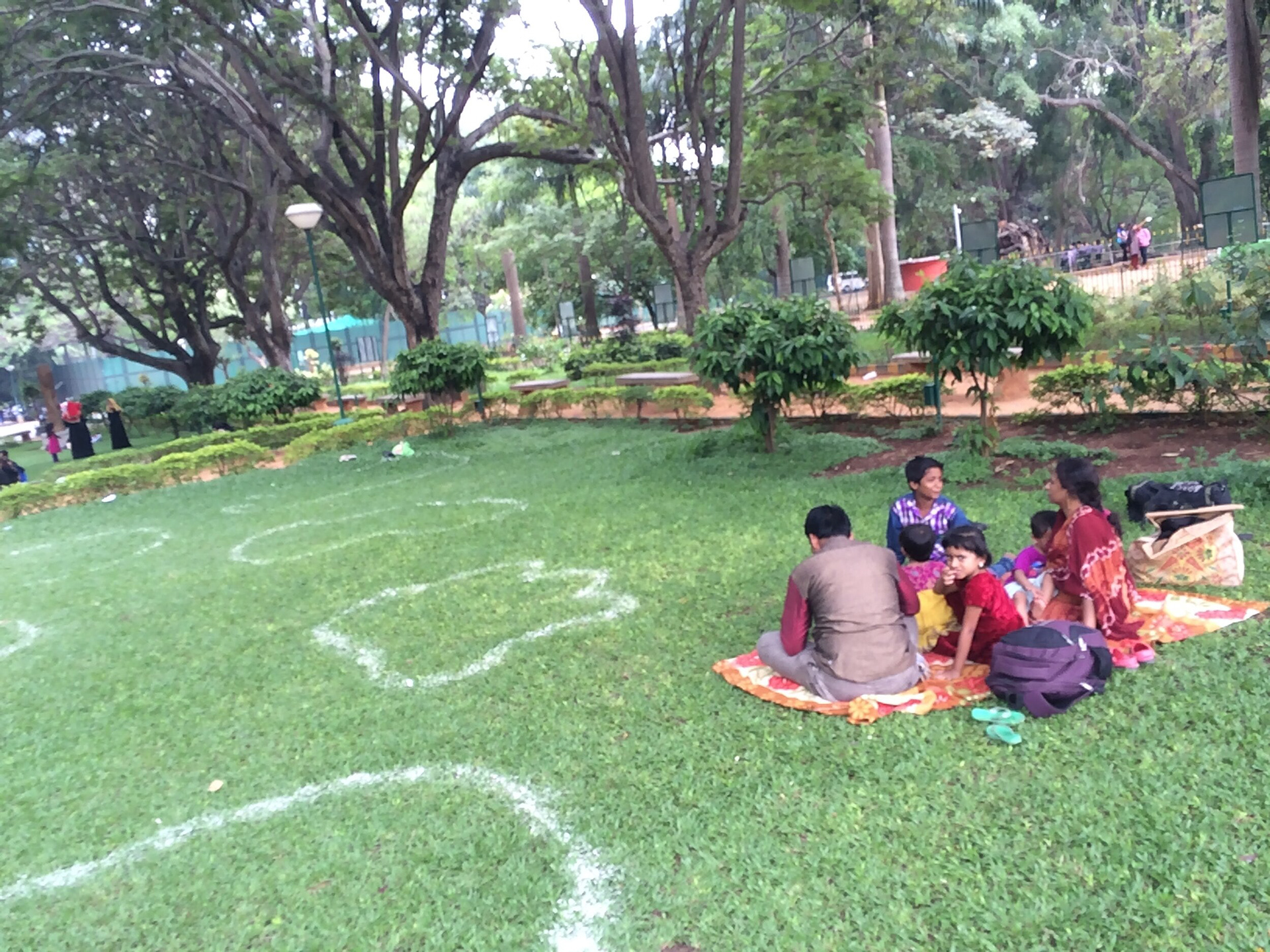
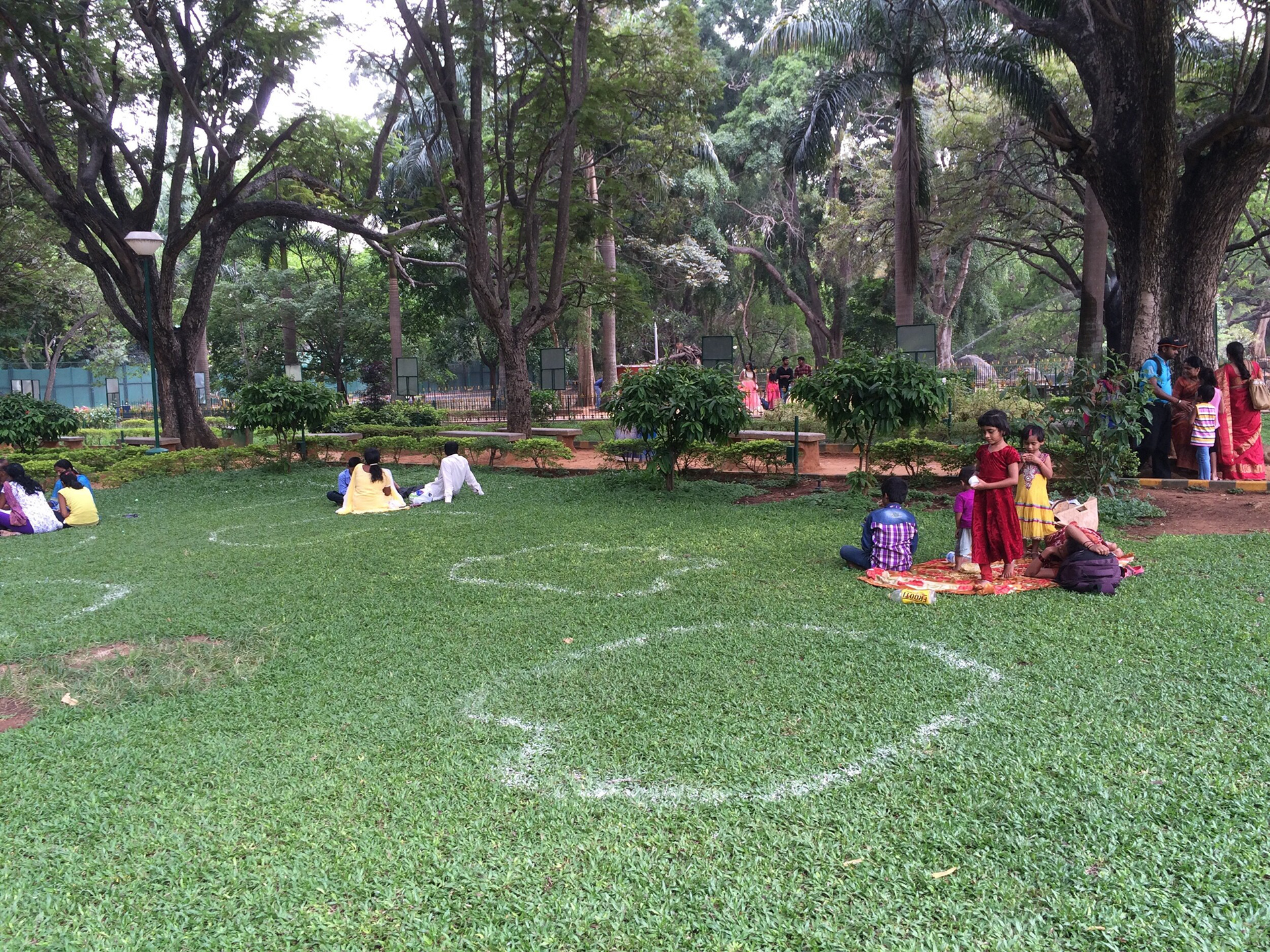
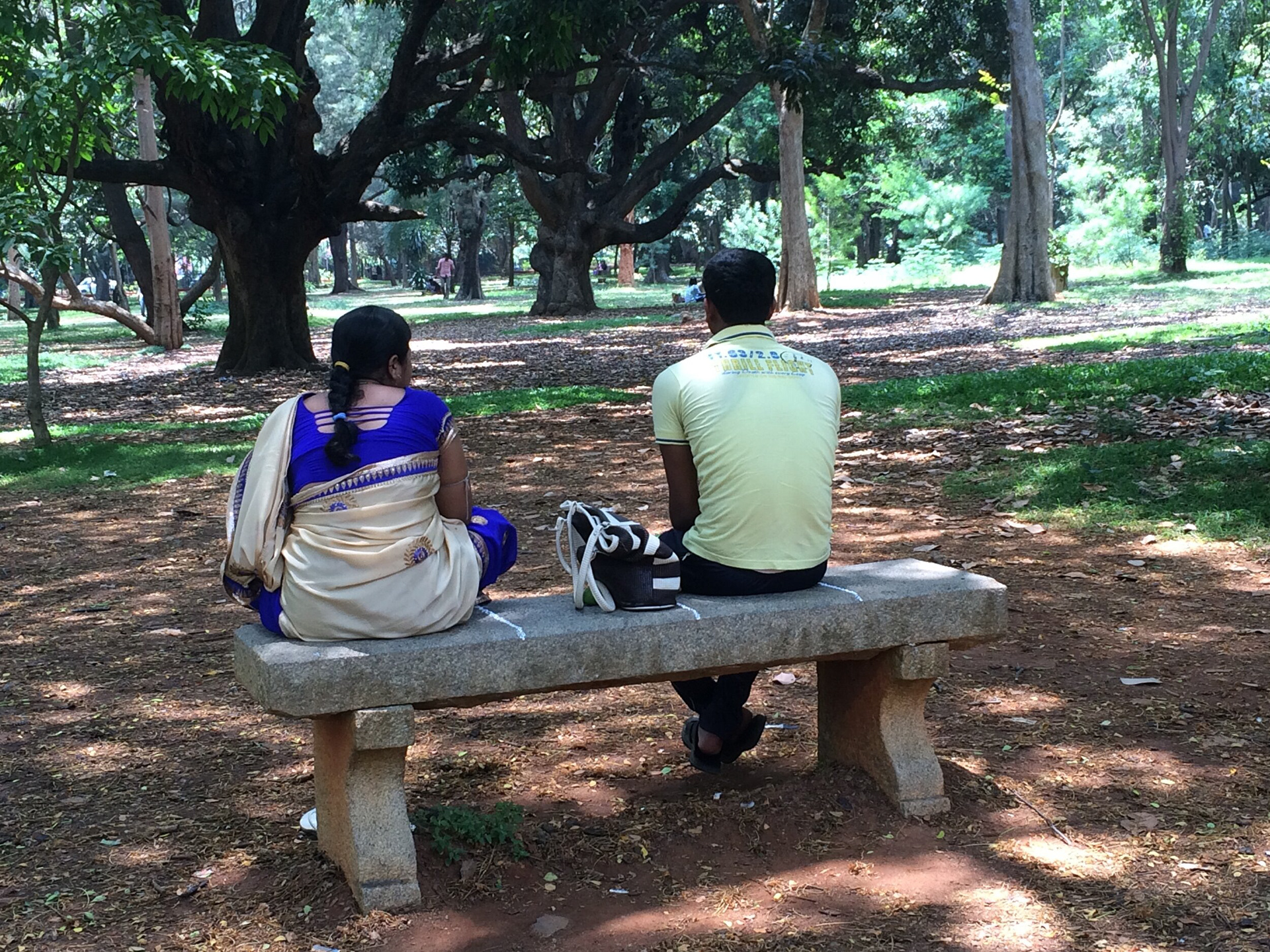

In a microsite, these experiments rendered how our approach to designing public spaces need to begin by understanding people's relationship with space. The role of design is far greater than aesthetics but as a tool that curates the spaces, gives meaning to it, critiques its social processes and provides an inclusive code of conduct.
How do we then create inclusive public spaces that facilitate interaction and conversations across perceived & fabricated borders?


